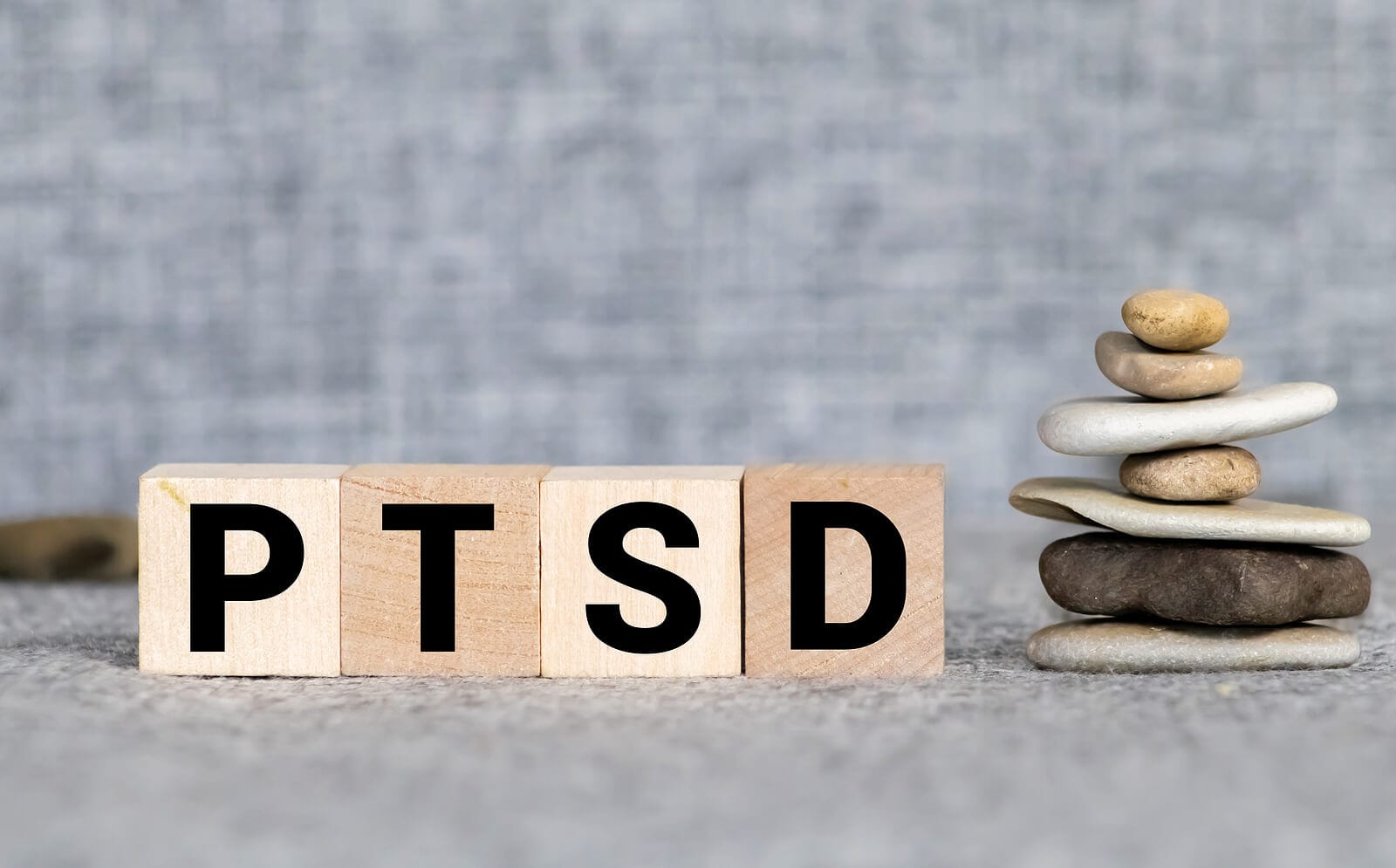Trauma therapy is a specialized approach to working with individuals who have experienced trauma. Although there are many types of trauma, they all have one thing in common: they affect the way you think, feel, and behave. If you’ve ever dealt with a stressful situation that makes you feel like you’re not yourself or someone close to you has been through something traumatic, then you know this. Traumatic events can also cause trauma symptoms such as:
- flashbacks
- feeling numb or disconnected from other people (disassociation)
- mood shifts including depression and anxiety
- racing thoughts/heart rate
- panic attacks
- trouble sleeping/nightmares
- fears that don’t make sense to others
- constant alertness and hypervigilance
- loneliness and disconnection from others.
So, What Does Trauma Therapy & PTSD Treatment Help With?
PTSD symptoms are not one size fits all. Different people who go through the same or similar events will respond differently. The trauma symptoms they experience will be unique to them. Resilient Mind Counseling in North Carolina can help you identify your symptoms and make a plan for healing. The following is an explanation of some of the most common things that are addressed in trauma therapy and PTSD treatment.
PTSD Treatment For Flashbacks
Flashbacks are when the traumatic event that happened to you, or something similar, comes back without warning. They can be triggered by something as small as a certain smell or sound. Flashbacks are extremely common and often feel like they’re happening again.
Flashbacks can be terrifying, but they don’t mean that you’re going crazy or that your brain has been damaged. They’re just a symptom of trauma and there are lots of ways to cope with them. If you have flashbacks it’s important to talk about them with someone like your trauma therapist or doctor. That way they know how best to help you get through them.
Managing Disassociation in Trauma Therapy
Disassociation is a sense that you are detached from your surroundings as if you are watching the world from a distance. It can happen during an emotionally intense or traumatic event. But it also can be a way of coping with life’s stresses without having to deal with them head-on.
The concept gets confused with daydreaming because both involve being involved in your own thoughts and feelings. However, there is one key difference. When you daydream about going bungee jumping, for example, you know it’s not real. Whereas someone who dissociates may feel as though they were actually doing it at the time.
Disassociation is also different from “spacing out”. Spacing out feels more like forgetting where you are or what you’re doing (for example, driving home and then realizing that ten minutes later). While dissociating feels like entering an altered state of consciousness where the mind experiences things not normally seen in reality.
Addressing Feeling Numb & Unconnected in PTSD Treatment

Feelings of numbness and disconnection are common among trauma survivors and those experiencing PTSD. While there are many reasons for feeling this way, it’s important to know that it is a symptom of trauma. Not a personal failing or side effect of the past experience itself.
This can include:
- Feeling separated from your body (e.g., being outside yourself)
- Emotional numbness
- Feeling disconnected from your emotions and bodily sensations (e.g., “I don’t have any feelings anymore.”)
- Becoming disconnected from others (your loved ones)
- Feeling separated from your thoughts, memories, and surroundings. These may feel like they’re happening to someone else or in a different place than where you currently are now.
Handling Mood Shifts in Trauma Therapy
Mood shifts are feelings that can shift rapidly from one extreme to another. You may feel happy and then suddenly sad, or anxious about something and then calm. These mood shifts can be triggered by reminders of the trauma or by experiences that remind you of how you were during the trauma itself.
When someone experiences a traumatic event, it’s normal for them to feel depressed, angry, or irritable afterward. They might also notice changes in their sleeping habits or appetite. As well as difficulty concentrating on everyday tasks like doing homework or remembering appointments. Trauma therapy and PTSD treatment can help regulate these shifts in your mood.
Lessening Racing Thoughts & Heart Rates in PTSD Treatment
Racing thoughts can be a sign of anxiety, PTSD, and even depression. If racing thoughts are accompanied by heart palpitations, sweating, or dizziness, it can indicate an increase in stress levels that may lead to a panic attack. If you’re experiencing racing thoughts as a result of trauma and these symptoms are interfering with your daily life, it’s important to seek help from a trauma therapist in North Carolina immediately.
Reducing Panic Attacks in Trauma Therapy
Panic attacks are sudden rushes of intense physical symptoms and emotional distress that occur when a person is exposed to a situation they perceive to be stressful or dangerous. They can be caused by stress, anxiety, or trauma. If you have panic attacks frequently, you may have an anxiety disorder.
The most common symptoms include:
- Palpitations (feeling your heart race)
- Sweating
- Trembling or shaking
- Shortness of breath or difficulty breathing
Address Trouble Sleeping & Nightmares in Trauma Therapy
When you’re working through trauma, your sleep can become an issue. Sleep is an important part of healing from trauma, so it’s important to learn how to deal with these issues as they arise in trauma therapy and PTSD treatment:
- Nightmares and other disturbances in sleeping patterns can occur after experiencing a traumatic event. These disturbances may be caused by the fear and anxiety that results from the event itself, or they may be triggered by external stimuli (like noises), which remind you of what happened during the traumatic experience.
- Insomnia is a common symptom for people undergoing PTSD treatment. This is because insomnia occurs when your brain does not shut down at night properly and causes restlessness throughout the night.
- Sleepwalking is another possible PTSD symptom – especially if there was physical violence involved in your traumatic experience and/or if there was some kind of substance abuse involved (such as alcohol). If someone experiences sleepwalking episodes, he or she should also consider seeking support from a trauma therapist before they start putting themselves at risk while they’re unconscious!
Discussing Fears That Don’t Make Sense to Others
 Many people have fears that seem irrational, but they have a reason for them. For example, if you were in an abusive relationship or had a difficult childhood, it may be hard for you to trust other people and feel safe with them. These are reasonable things to be afraid of; however, if your fear is not based on reality (for example, being afraid of someone who has never hurt you), then it’s important to seek help from a caring and trained therapist who can understand and help address these issues.
Many people have fears that seem irrational, but they have a reason for them. For example, if you were in an abusive relationship or had a difficult childhood, it may be hard for you to trust other people and feel safe with them. These are reasonable things to be afraid of; however, if your fear is not based on reality (for example, being afraid of someone who has never hurt you), then it’s important to seek help from a caring and trained therapist who can understand and help address these issues.
If your fears are based on an actual experience, but they don’t make sense logically (for example: “I’m afraid that my partner will leave me”), then this is another sign that trauma therapy and PTSD treatment may be helpful for addressing them
Reducing Constant Alertness, Hypervigilance, & Anticipatory Anxiety
One of the most common trauma and PTSD symptoms is hypervigilance. Hypervigilance refers to the state of being on high alert and ready to defend yourself at all times. This is a protective mechanism that can be extremely challenging to turn off, even when you don’t need it anymore. It may lead you toward heightened anxiety over what could happen next if certain situations arise (e.g., driving in traffic). Anticipatory anxiety refers to similar worries about the future. For example, someone who experiences anticipatory anxiety from hypervigilance might constantly wonder whether their car will break down so as a result, they’ll avoid driving whenever possible. It’s important for anyone with this symptom to learn how to live comfortably with it by talking about it in trauma therapy. So that they can develop healthy ways of coping with their feelings instead of retreating from them or shutting down emotionally altogether.
Fighting Hyperarousal & Startle Response in PTSD Treatment
This is another one of the most common symptoms of trauma we see in trauma therapy at Resilient Mind Counseling and it can be a difficult issue for you to deal with. Hyperarousal is a physiological response to stress that involves an increase in heart rate, blood pressure, sweating, muscle tension, and even hormone release. These symptoms can occur suddenly and unexpectedly even when there’s no apparent threat or danger present. Additionally, they are often accompanied by intense feelings of alarm (e.g., worry or fear).
Taking A Look At Loneliness & Disconnection From Others
It is common for those with PTSD to experience loneliness and disconnection from others. This can be due to a lack of support from family and friends, but also comes from an overall sense of feeling unworthy or unlovable. You may feel like you are not good enough for anyone, or that no one wants to get close to you because you aren’t worth it.
As we discussed above, this type of thinking can come about in two ways:
- through childhood experiences where the individual felt neglected or rejected by their parents, siblings, or other caregivers
- From experiences later on in life (e.g., being abused by an intimate partner).
In either case, it’s crucial for those suffering from these feelings of loneliness and disconnection to receive help via trauma therapy and PTSD treatment so they can start feeling comfortable with emotional closeness again
Trauma Therapy & PTSD Treatment Can Address A Variety of Trauma Symptoms.
This list was not all-inclusive of all trauma and PTSD symptoms that a person can experience. As mentioned above they are unique to each person. That is why trauma therapy can help address a variety of symptoms. In PTSD treatment, you’ll learn how to process your trauma and develop tools for coping with it. While you may need support from other people in addition to the therapist (such as friends and family, or a coach), all of the work is done with your trauma therapist.
Final Thoughts From An Online Trauma Therapist in North Carolina
 With all of these PTSD and trauma symptoms in mind, it’s easy to see how trauma therapy can be a powerful tool for healing. PTSD treatment and trauma therapy are used to help people process their past experiences and build new coping skills so that they no longer feel overwhelmed by the world around them.
With all of these PTSD and trauma symptoms in mind, it’s easy to see how trauma therapy can be a powerful tool for healing. PTSD treatment and trauma therapy are used to help people process their past experiences and build new coping skills so that they no longer feel overwhelmed by the world around them.
It also encourages survivors to reconnect with others and regain a sense of purpose in life. Research shows that those who participate in this type of treatment tend to experience lower rates of depression than those who do not seek help at all.
Are You Ready To Start Trauma Therapy in North Carolina?
Have you experienced any of the trauma symptoms listed above? Our trauma therapists in North Carolina are ready to help you address them and start living a full and happy life. At Resilient Mind Counseling, we understand how hard it can be to connect with others and reach out for help after a traumatic event. To get started all it takes is to follow these three steps.
- Start by scheduling a free consultation with us.
- Schedule your first trauma therapy appointment with a trauma therapist in North Carolina.
- Start living your life free of fear and begin to feel in control of your life again.
Additional Services Offered by our Asheville Mental Health Therapists
Our online therapists are skilled and trained in more than just trauma therapy and PTSD treatment. We offer anxiety treatment, depression treatment, mood, and bipolar disorder treatment. As well as neurodivergent support, BIPOC mental health resources, and LGBTQIA+ Therapy. In addition to counseling, we also offer psychiatric services. Our Asheville, NC-based office offers these services throughout North Carolina with online therapy.














